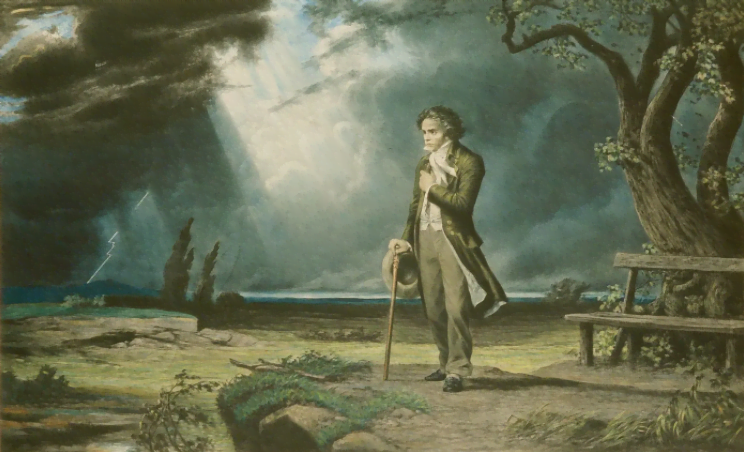What is Für Elise?
Für Elise is a piece of classical piano music composed in Vienna in 1810 by pianist-composer Ludwig van Beethoven. Classified as a Bagatelle, the song was not really known until 1867, when it was published on score.
The song is composed of 103 bars and its running time is about 3 minutes.
Für Elise is now the most famous classical piano song in the world, followed closely by Pachelbel’s Canon. It has been interpreted and arranged many times throughout history.
Who wrote Für Elise?
The composer of Für Elise is the German pianist Ludwig van Beethoven. Very famous in his lifetime, he was even more so after his death. Today he is one of the most famous classical pianists and composers in the world, alongside Mozart, Schubert, Debussy and Chopin.

Who was Ludwig van Beethoven?
Beethoven is a German pianist and composer born in the city of Bonn in 1770.
His father, also a musician, taught him music from an early age. The young Beethoven seems to be gifted and quickly finds himself an exceptional musician.
At the age of 27, Beethoven became deaf. He then composed all his symphonies, piano pieces or chamber music without being able to listen to them. Thus the Ninth Symphony or the Missa solemnis were born in the deafness of their author.
Beethoven died in 1827 in Vienna, after bequeathing to humanity an exceptional musical production.
After Mozart or Haydn, he was the last symbol of a movement called Viennese classicism and prepared, through his compositions, the advent of romanticism.
Beethoven had a considerable influence on the later international music scene. He influenced not only the classical world, but also all other musical genres, and even jazz pianists.
Why did Beethoven write this piano piece?
We always thought that Beethoven had written Für Elise to honor a certain Elise, as the name indicated. But we were not aware of any Elise in his entourage. Either the sources mentioning Elise had disappeared, or Elise had never existed… We develop this topic in several of the 4 anecdotes to follow!
4 little-known anecdotes about Für Elise
1 – A dedication to Therese Malfatti?
Several hypotheses are put forward as to the true dedicatee of this piece. The first of these argues that the real name of the music should have been Für Therese! This music is said to have been intended for a certain Therese Malfatti, an Austrian musician close to Beethoven. The composer asked her to marry him in 1810 (the date of the composition of his Für Elise) but she rejected her request. But then, why is the play called Für Elise?
Shortly after the death of the famous German composer, a musicologist named Ludwig Nohl discovered Beethoven’s music sheet, Called Bagatelle in A minor, WoO 59. When he read it, he realized that he could not properly discern all the letters contained in the title, especially on the name of the dedication. Nevertheless, he managed to distinguish the last two letters from the name: “se”. He then had the idea of arbitrarily name it “Elise”.
2 – A dedication to Therese of Brunswick?
Another hypothesis is that this name of Therese to which many clues bring us actually refers to a certain Therese from Brunswick. The latter was a pupil of Beethoven but also his lover. They were both said to have been in a romantic relationship for more than two years, from 1806 to 1808.
This is not the first time the composer has dedicated one of his pieces to Therese from Brunswick. In 1809, he had composed his Piano Sonata No. 24 in F sharp major, Opus 78, which he dedicated to Therese.
3 – A dedication to Elisabeth Ràckel?
A third hypothesis, more recent and made by Klaus Martin Kopitz, would be that Für Elise is in fact a dedication to a certain Elisabeth Rackel, German singer, who was actually named Maria Eva Elise.
This assumption is viable insofar as the two protagonists had a friendly relationship, if not more (without being able to verify it). A contemporary source mentioned an interesting anecdote about it: during a dinner, Beethoven would have pinched Elizabeth’s arm by gesture of affection.
4 – Posthumous fame
Für Elise was not known during the author’s lifetime. Indeed, as previously said, it was a musicologist who found this piece in Beethoven’s affairs. Following this discovery, he decided to publish it in 1867, 40 years after the death of the German composer (Beethoven died in 1827). Thus, during all these years, the song remained unknown to the general public.










